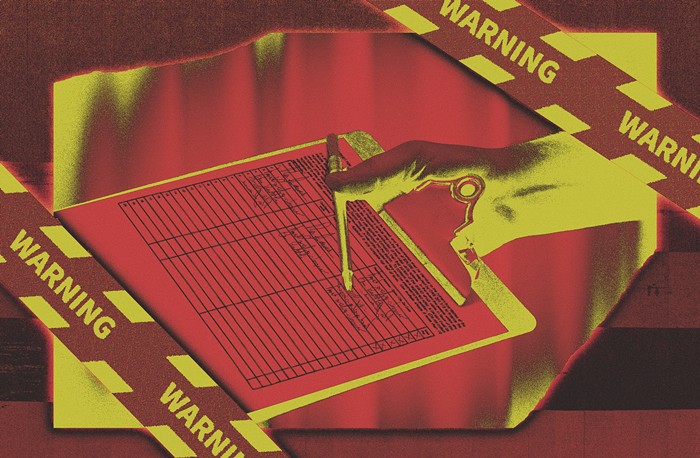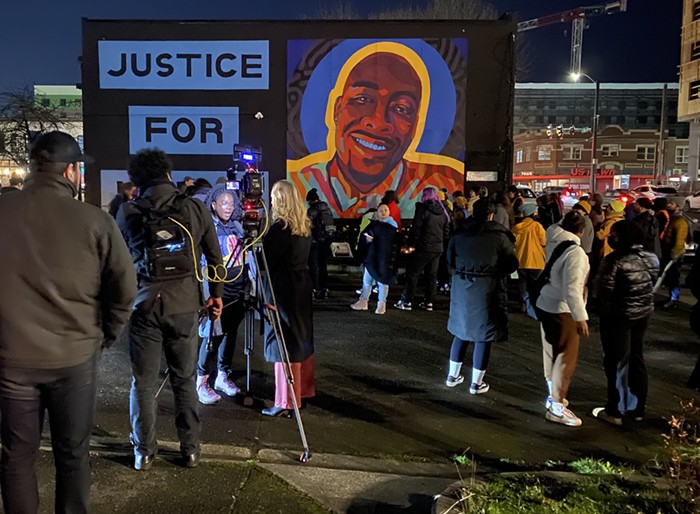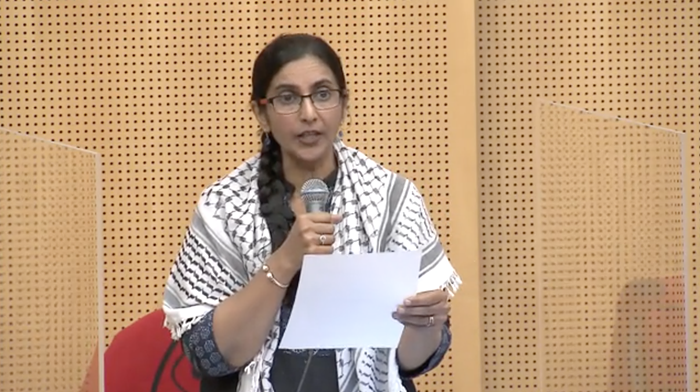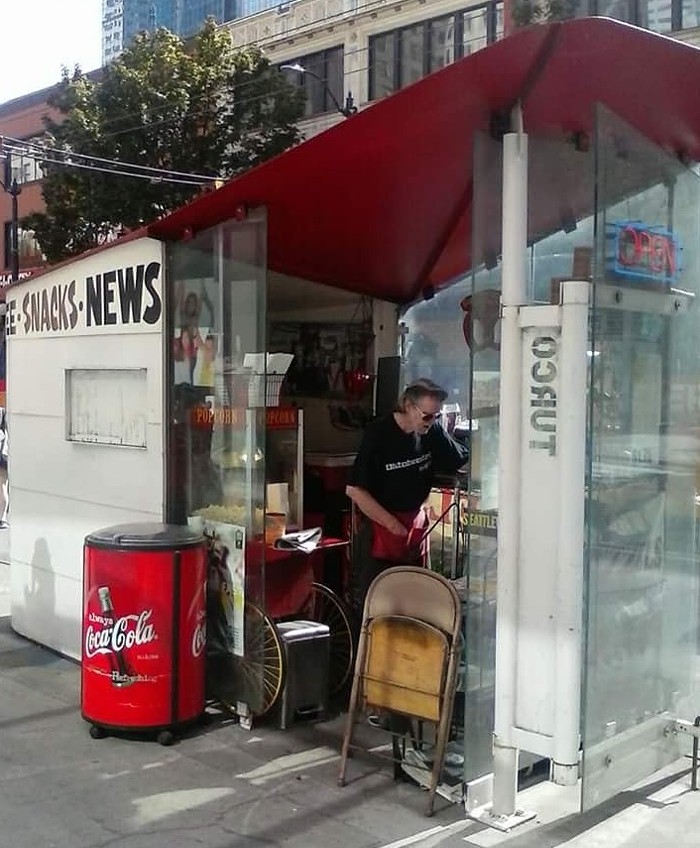
One week ago, Public Defender Association attorney Patricia Sully was feeling wary. Ahead of Black Friday, she wondered how the Seattle Police Department would treat Black Lives Matter demonstrators who again planned to protest in the downtown corridor on the busiest shopping day of the year.
At a City Hall press conference, Sully and other civil rights advocates called on the department to "refrain from violent attacks" on protesters—a reference to the pepper-spraying of Jesse Hagopian on Martin Luther King Day and other incidents over the past year. And in a statement sent to The Stranger, Sully warned that the constitution guarantees the right to free speech, not a right to uninterrupted shopping.
Now that the protest has arrived and departed—with hundreds of largely peaceful demonstrators showing up, four reported arrests, and one reported officer injury (see Stranger coverage here and here)—how did the police do?
Sully, who observed the protests in person, said there was a "marked improvement by SPD in the handling of this year's Black Lives Matter protest on Black Friday."
It was a relief to see more officers wearing regular uniforms most of the time, she said. For much of the day, the police were passive, allowing demonstrators to move around downtown, rather than blocking them. Unlike last year, police didn't pepper spray or use flash bangs on protesters, or attempt to push them away from downtown and up to Capitol Hill.
Police spokesperson Sean Whitcomb agreed, calling it a "vast improvement." But Mohawk Kuzma, who helped organize the demonstrations, said police were "hostile in a different manner... Instead of using flashbangs and pepper spray, they were physically attacking people and pulling on their hair"—a reference to one incident outside Westlake Mall.
The relatively restrained posture of the police reminded me of May Day 2014, when police stayed hands-off and kept the deployment of riot gear (as well pepper spray) to a minimum during a daylong, meandering anticapitalist protest march. (That proved to be a one-off. This year's May Day was another story entirely.)
Despite this year's improvement over the SPD's handling of the 2014 Black Friday protests, Sully said, "there were still incidents that call for critical review." She mentioned three things in particular:
1. Excessive force: While police blocked protesters from entering Westlake mall, an officer reached out and grabbed a photographer's hair, pulled it violently downward, and let go.
Today, a @SeattlePD officer maliciously grabbed @PhotoJT by the hair, yanked his head down, then let him go. pic.twitter.com/Kk1dA792oi
— Ansel Herz (@Ansel) November 28, 2015
Here's footage, shot by protester Doug Vitaly, whose account of the protests you can read here. This video shows some of the lead-up to the hair-pulling moment, and then shows it again in slow-motion:
Jay Trinidad, the man who shouts "What the fuck!" when his hair is pulled, is a professional photographer—you may recall that he took a haunting photograph earlier this year of an apparent neo-Nazi on a Seattle ferry. Trinidad said he was there to photograph the demonstrations, that he was doing nothing wrong or illegal, and that he was "got scooped into the front of the police response." He plans to file a complaint.
The hair-pulling officer's name is only semi-visible on his uniform in the video; I can't make it out. Chief Kathleen O'Toole said she would refer the incident to the Office of Professional Accountability for an investigation, which will take months.
Trinidad was not arrested or charged with any crime (the SeattlePI.com has details about the few arrests that occurred). From the video, it appears to me that he was simply assaulted by a police officer who chose to inflict gratuitous pain on him.
2. Blocking access to public spaces: In the afternoon, seemingly out of nowhere, a police barricade of bike officers appeared on Pine Street and Sixth Avenue. Holiday ceremonies were about to get underway two blocks down the street at Westlake. An officer on the barricade told me I couldn't head down that way. When I asked why, he repeated himself and refused to explain any further.

Nearby, I ran into Assistant Chief Robert Merner. "We're not going to let folks come down the middle of the street where the ceremony is," he said. "And that's anyone."
It made no difference, though. Protesters ran around the block and through an alleyway leading directly to the area in front of Westlake and the ceremony stage. Soon the area was full of Black Lives Matter protesters chanting and competing with the holiday music.
"As was the case in past protests," Sully said, "on one occasion officers attempted to prevent access to Westlake to demonstrators and those in the vicinity of demonstrators. We know of no legal authority that would make this tactic appropriate, given that Westlake was open to the public and there were no emergency circumstances."
3. Riot gear: The department made a deliberate choice to deploy most of its officers in their regular uniforms, rather than riot gear, according to spokesperson Sean Whitcomb. Wearing riot gear sends an unmistakable message: we're ready for a confrontation. And it upsets protesters—who, this year, seemed to be a diverse group of young and old people, including families with children.

Uniform aside, Kuzma said the sheer number police officers—he estimated about 40 of them—milling around Westlake seemed to him like an intimidating show of force.
"While it was a welcome relief to see more officers in standard uniform for most of the day," Sully said, "there was still a pre-emptive move to wearing riot gear in non-riot environments in the evening." The few times the officers did don riot gear, the crowd chanted at them, "Take off your riot gear! We don't see no riot here."
All in all, Whitcomb said, "It should be acknowledged that we can have a major protest event in our downtown core the same day that we have holiday festivities. These things can co-exist."
This story has been updated since its original publication.


















